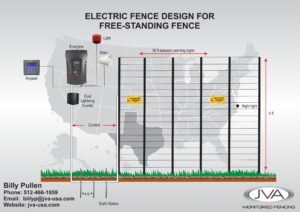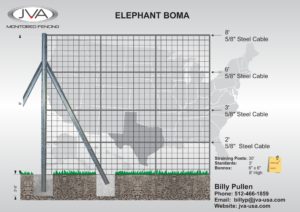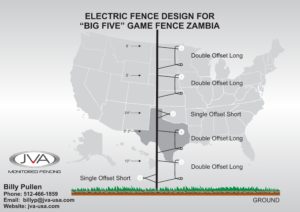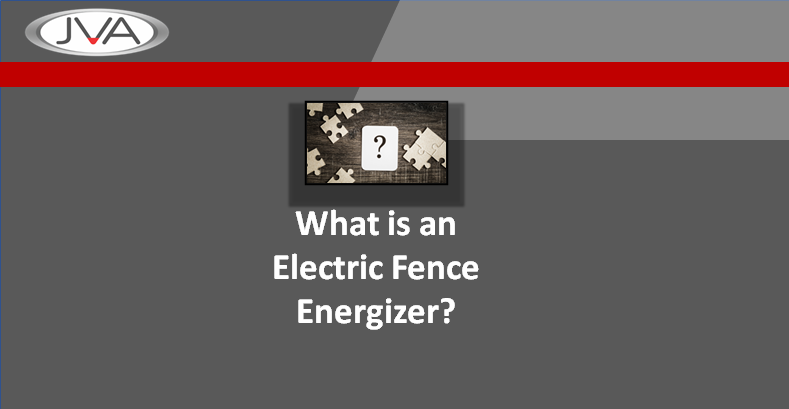Electrified fencing for agricultural applications will likely be for strip grazing, temporary fencing, or protecting expensive game. Whatever its purpose, the following elements will need to be considered for any agricultural fencing project:
- Fence design
- Energizer size
- Power source
Let’s look at these three elements in detail…



What to Consider with Agricultural Fence Design
The factor that has the biggest impact on an electric fence is the proper earthing or grounding of the fence. The principle of an electric fence is for the electrical pulse provided by the energizer to flow along the conductors, through the animal being controlled, and down to earth. This electrical pulse is what deters the animal from touching or forcing its way through the fence, and if the shock to the animal isn’t sufficient it won’t be deterred.
In areas where the ground is dry or the dirt is less conductive, additional earthing rods or spikes need to be driven into the ground. One of my preferred configurations is when there is at least one strand of the fence that’s an earth or ground strand. This is connected to the earth terminal of the energizer and to earth rods that are driven into the earth at intervals along the fence.
Depending on the ground conditions, the rods should be driven in at 300’ to 600’ intervals. At the energizer, there should be at least three rods driven into the ground at 3’ intervals. This video is a great resource for information on the differences between agricultural and security energizers.
As an electric fence is an electrical circuit, it stands to reason that each component will have a bearing on the efficiency of the system. Rural fencing may be a single strand of polywire or a number of strands of smooth, highly conductive wires.
The common fact is that the fence strands need to be conductive and insulated. The type of insulators will generally not be a major factor as these are designed with a specific purpose in mind. The conductive strands, however, need more consideration. This is because the resistance of the material and thickness of the conductors differ in each case and therefore have an impact on the overall design.
There are a number of fence designs for different animals on our website, or you can send me an email me at billy@jva-us.com to get a copy of our handy wire resistance chart.
What Size Energizer or Charger is Needed for Agricultural Fencing?
This question is a BIG bone of contention in the industry.
The norm by equipment suppliers is to classify their energizers by the miles of fence or size of property that the energizer or charger can power. This isn’t AT ALL how it works.
A charger’s efficacy will depend on the following:
- Fence resistance – the type of conductors, how the joints are made in the conductors, and the fence length.
- The wiring configuration – whether it’s connected in series or parallel.
- Insulation factor – the type of insulators and the vegetation growth on the fence.
- The earthing or grounding of the fence.
Energizers work on a capacitive discharge principle. The power supplied to the system charges a capacitor and discharges that capacitor onto the fence through a step-up transformer. This pulse of energy is measured in joules.
The rule of thumb for a good, clean five-wire EF with three hot strands of 12.5-gauge galvanized steel wires connected in parallel on a ten-mile-long fence is a charger with an output of 1 joule.
Be aware that some manufacturers rate their energizers by the stored energy in the capacitors and not the output energy of the machine. This is misleading when comparing energizers because the energy loss can be 40% or more. That’s not where the ridiculous claims end, either. The label on one energizer said it had an output of 68 joules. When the owner of the business was confronted, he said it was “a typo” and should read 6.8 joules. Unfortunately, there are unscrupulous traders out there, so if you’re unsure just give me a call and I can recommend rural fencing products that you can trust.
Choosing a Power Source for Your Agricultural Fencing
Choosing the power source for your agricultural fencing is fairly straightforward. You have three options for your power source:
- Mains
- Battery
- Solar
Mains power is a solid option if your fence will have access to it, but that’s often not the case. Batteries are another option and certainly have their benefits, but there’s the hassle of continually removing and charging a battery to bear in mind. If neither of those options appeals to you, solar power is a reliable alternative. This blog is a great source of information on whether the system needs an energizer bigger than the packaged solar-powered units available.
How to Design and Configure Agricultural Fencing
So there you have it: the three elements to consider when designing and configuring rural fencing products.
The design itself is the most complex element of any agricultural fencing project and will literally lay the foundation for the other elements of your setup. Energizers and chargers are relatively simple to choose between, but the marketing of these products can be a little questionable so it’s often worth consulting an expert before hitting the buy now button. The power source is simply a question of personal preference and the accessibility of the area you want to fence.
If any element of farm fence installation sounds like too much of a headache to contend with, just give me, Billy a call. Day or night, I’m always available for advice and recommendations. that’s why we call this series of blogs #AskJVABilly




